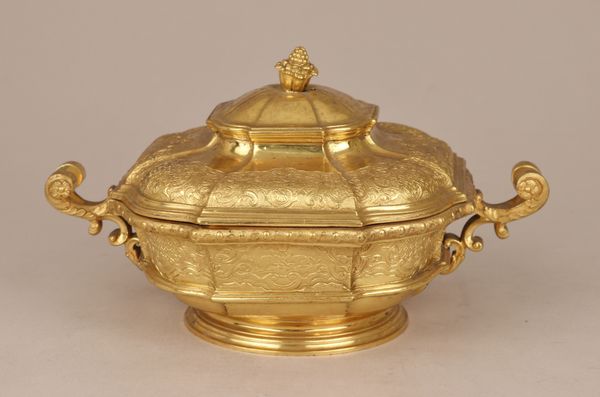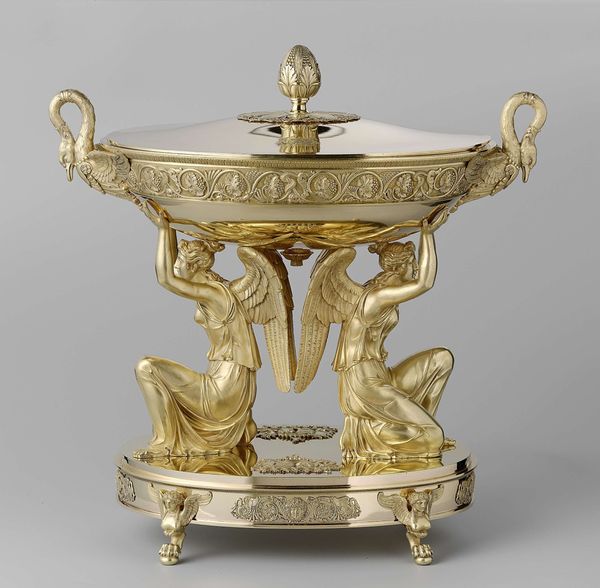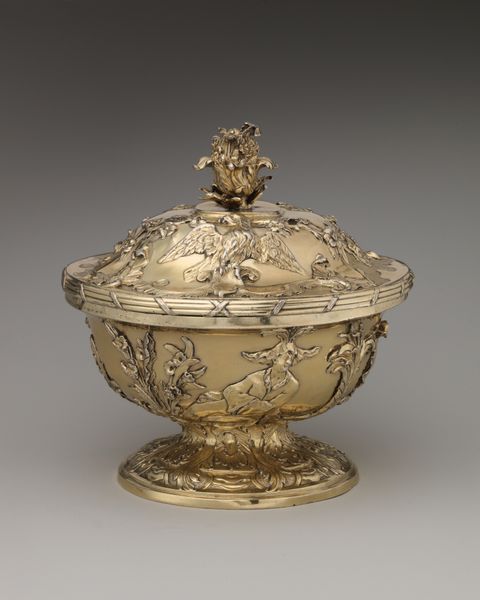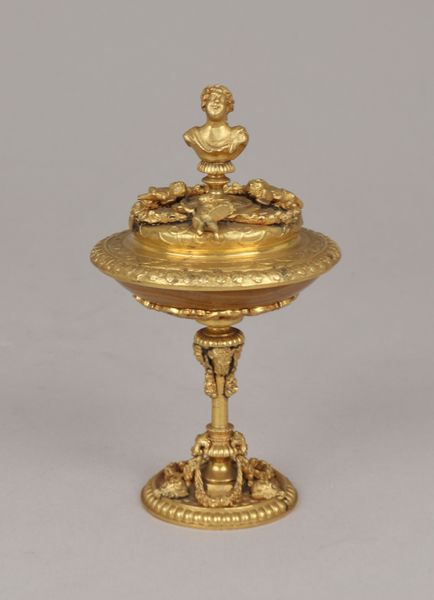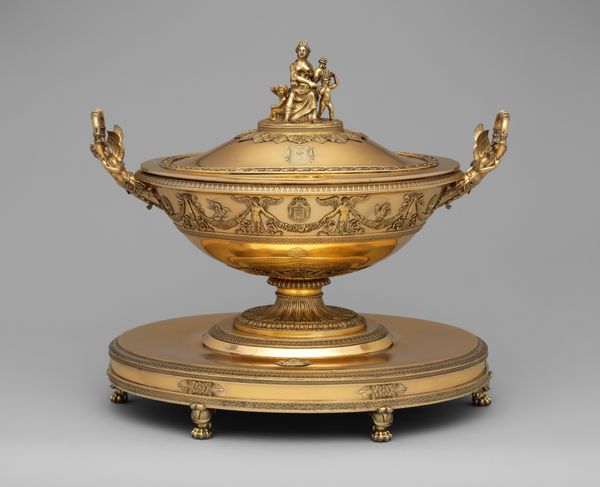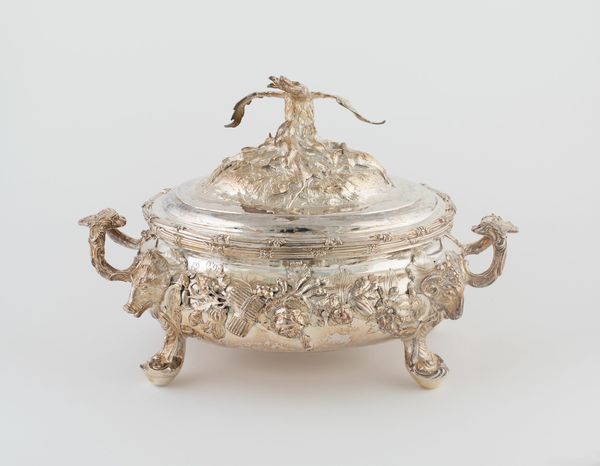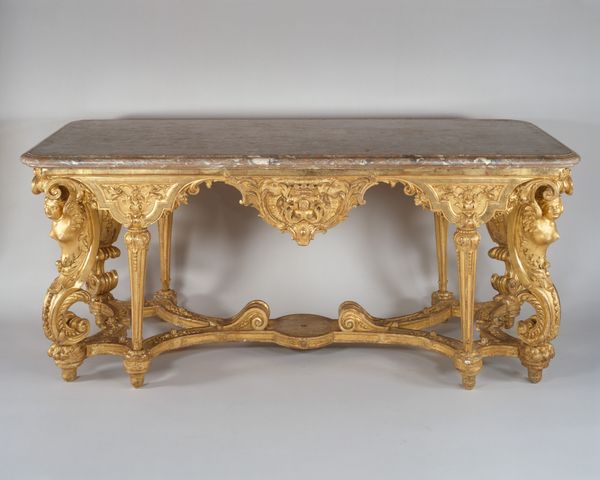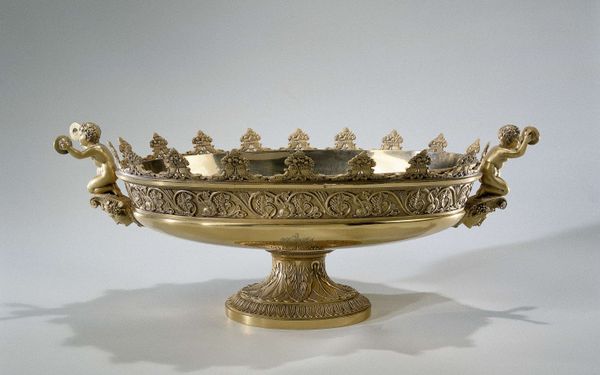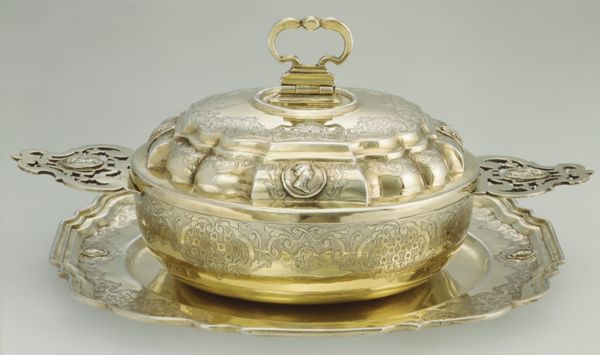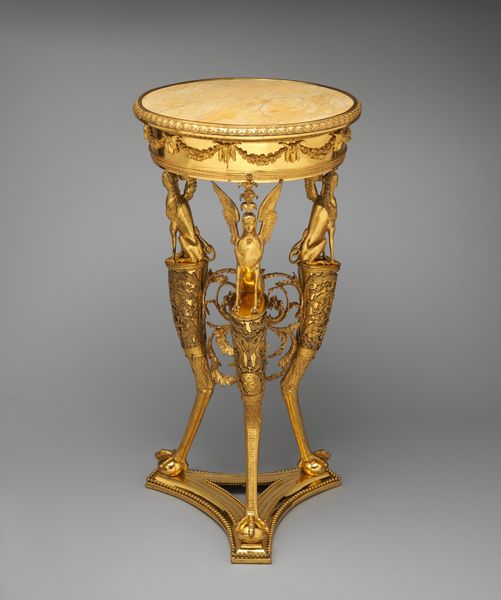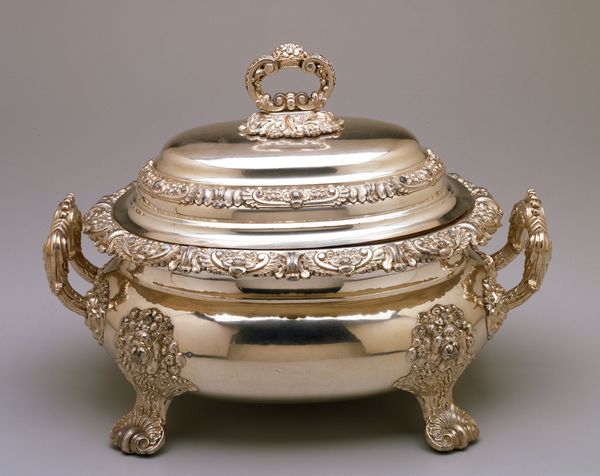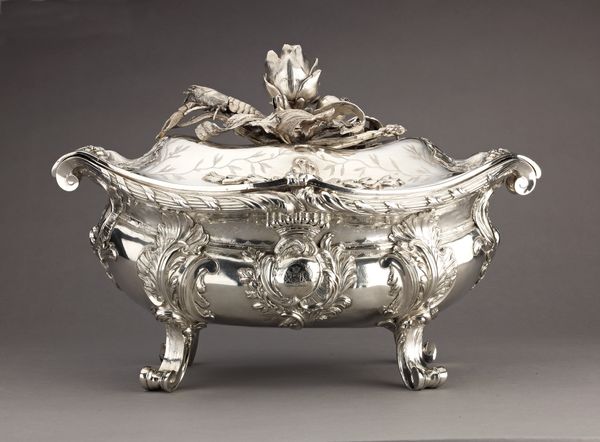
Dimensions: Overall: 6 1/2 × 11 in. (16.5 × 27.9 cm)
Copyright: Public Domain
Curator: This ornate piece before us is a casket crafted by Johann Ludwig Biller in the 19th century. It is held here at the Metropolitan Museum of Art. What are your initial thoughts on its presentation? Editor: Immediately, I see opulence. It feels excessively gilded and undeniably baroque in its flamboyance. Its heavy embellishment seems to say more about wealth and power than refined aesthetics. Curator: It is striking. Biller's choice of gold, undoubtedly intended to project authority and status, aligns perfectly with the socio-political currents of the time, where courtly display and wealth were integral to maintaining power. What function does such ornamentation play in Baroque courts? Editor: Courtly display was essentially political theater. The more extravagant the objects, the more they reinforced the perceived legitimacy and superiority of the ruling class. This casket, while decorative, actively participated in reinforcing social hierarchies. It asks the question: who has the authority and means to access such wealth and mastery in crafting? Curator: Precisely. Moreover, consider the labor embedded within the creation of this object. The mining of the gold, the intricate craftsmanship – all speak to exploitation. How does situating such a beautiful piece within this labor context challenge its perception? Editor: By foregrounding the unequal power relations necessary for its production, we’re compelled to question its beauty. The artistry doesn’t negate the ethical complexities; instead, they are amplified. Recognizing whose labor funded and constructed such ostentation raises pertinent issues regarding equitable distribution of wealth and ethical considerations in art appreciation. Curator: Absolutely. Its elaborate detailing and overt display can be read as both a testament to skilled artisanship and a stark representation of class disparity, offering, hopefully, an opportunity for contemporary viewers to reflect critically. The Rococo decorative elements complicate this further, perhaps alluding to gendered connotations of vanity. Editor: Perhaps seeing it that way allows us to deconstruct traditional notions of value linked to rare objects. Instead of simply admiring the gold and ornamentation, we now examine the artwork as a historical agent embedded within a web of social injustices. Thanks for unveiling so many nuances with this beautiful, albeit complex, object!
Comments
No comments
Be the first to comment and join the conversation on the ultimate creative platform.
